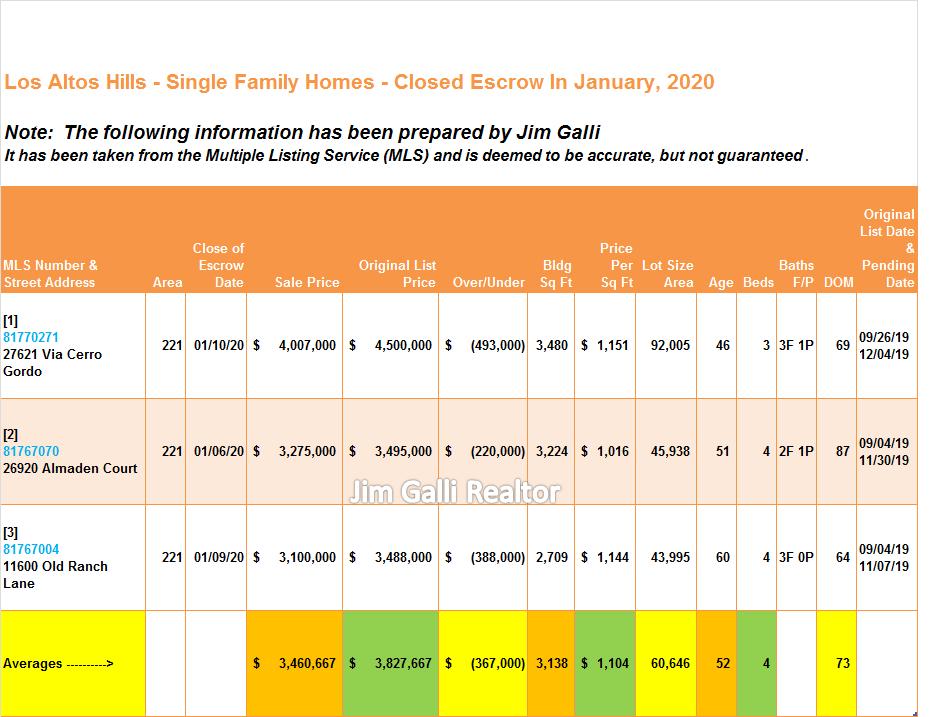Jim Galli & Katie Galli Ketelsen Realtors
The Best Father/Daughter Real Estate Team In Northern California, Serving Silicon Valley & Surrounding Areas
Santa Clara
Los Altos
Sunnyvale
Los Altos Hills
Campbell
Cupertino
Mountain View
Palo Alto
Los Gatos
Saratoga
Monte Sereno
Willow Glen
Cambrian
Almaden Valley
Central San Jose
West San Jose
Tips For Analyzing Real Estate Statistics and Data
Throughout my real estate career, I have found that there are three basic questions which get asked by sellers, buyers, friends, relatives, and co-workers. Here are those questions:
1) How is the real estate market?
2) How much is my home worth?
3) Am I paying too much?
I received my California Real Estate License in 1986. After many years of hearing these same questions, repeatedly asked, I decided it made sense to be able to show people, objectively, why I often gave them answers that differed from information they read in the paper or saw on television. The main reason was because the statistics that I used were very specific to the local town or city, rather than to the general region or county. Forget newspapers, television, other un-informed real estate agents, lenders. I wanted a way, as a professional realtor, to allow my clients to understand what is really happening in their local markets. There is a lot of information out there. Unfortunately, much of that information is inaccurate, and typically, not verifiable. As the saying goes: "If you want something done right, sometimes you just have to do it yourself." So, I have undertaken a formidable task and compiled real estate data and statistics for those towns and cities located in Santa Clara County in a format that is simple to use and easy to understand. Below, you will find out how I quickly analyze what is going on in our local real estate markets. Obviously, every property is unique, so it really pays to talk to a professional real estate agent (yours truly would be a fantastic choice) to provide you insights that you may not be able to obtain just from raw data. If you are thinking of selling your home, a CMA (Competitive Market Analysis) would be tailored specifically to filter out data that is not relevant, and incorporate that which is relevant. If you are looking to buy, there is no substitute for enlisting the help of a professional real estate agent to help you navigate your way.
As you read the following paragraphs, you will find letters of the alphabet (white characters underlined on a red background). If you click on a given letter, you will be transported to a sample data sheet or chart to be shown exactly where that specific data can be found on the given data sheet or chart. To return back to the paragraph that you were just reading, click on the respective white letter with a red background, again. This web page is really a mini tutorial. I hope you enjoy what you learn! Here are some of my tricks of the trade:
1. Know what the Average Price Per Square Foot value is in the respective city or town. Out of all of the statistics, this one is probably the most useful, in my opinion. As a general rule of thumb, to come up with a quick estimate of a home's worth, multiply the square footage of that given home by the most current Monthly Average Price Per Square Foot figure available. This figure is displayed per property (click here: a ) and also at the bottom of the given city or town's data for the month (click here: b ). I have plotted these monthly figures on a graph (click here: c ) so being able to get a sense of whether property values are stable, rising, or declining, is easy to see at a glance.
2. Learn if properties are selling at, over, or under asking price (click here: d ). Have a sense of the overall trend (click here: e ). If the overall average shows a significantly higher sale price when compared to the asking price, then it, most likely, is a "seller's market for that town or city." If the reciprocal is true, then it, most likely, is a "buyer's market." Lastly, if the overall average is close to zero, it is probably neither a buyer's nor seller's market.
3. Be aware of Days on Market (click here: f ). Even in the hottest of markets, it still usually takes a week or two of exposing a property to the market before offers are heard. Scan this column to find the property with the least number of days, the property with the most number of days, etc. To get an overall feel of what is going on, the average found at the bottom should be a good indicator for the given month (click here: g ).
4. Determine how many homes have closed escrow in a given month. Note: each home is numbered in the first column. Scroll down the list to find the last number in that column, which is just before the averages for the given month(click here: h ).
5. Quickly identify the highest sale price (click here: i ). It will be the first property because the properties are sorted from highest sale price to lowest sale price (click here: j ).
6. Lot size, age of home, number of bedrooms, number of bathrooms are all important, as well. These items are included in the statistics provided and are self explanatory. For the sake of verifying information and accuracy, the MLS numbers are included above the property addresses.
If you have questions, comments, ideas, or need any assistance, please feel free to contact me click here .
Sincerely,
Jim Galli
